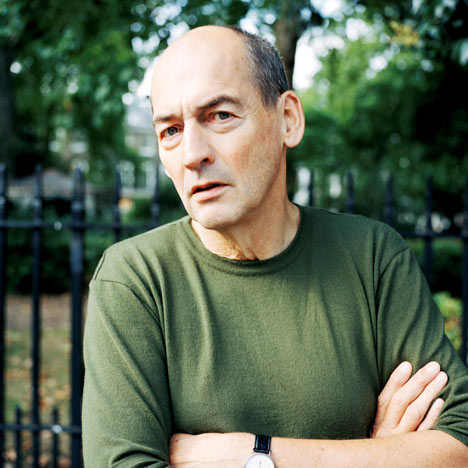
Rem Koolhaas reveals title for Venice Architecture Biennale 2014
Venice Architecture Biennale 2014: the Venice Architecture Biennale 2014 will be called Fundamentals and will chart the emergence of "a single modern language" in global architecture, its director Rem Koolhaas has announced.
"Fundamentals will be a biennale about architecture, not architects," said Koolhaas, principal of OMA, speaking this morning at a press conference held by biennale president Paolo Baratta at the event's headquarters in San Marco, Venice.
Koolhaas explained that event will "focus on histories" and the "evolution of architecture" in the last 100 years. "Architectures that were once specific and local have become interchangeable and global. National identity has seemingly been sacrificed to modernity," he said.
Starting a year earlier than previous directors, the architect hopes to coordinate the exhibitions in each national pavilion to follow a coherent theme. "The exhibitions in the national pavilions will generate a global overview of architecture's evolution into a single, modern aesthetic, and at the same time uncover within globalization the survival of unique national features and mentalities that continue to exist and flourish even as international collaboration and exchange intensify," he concluded.
Koolhaas was confirmed as director earlier this month, when he first announced: "We want to take a fresh look at the fundamental elements of architecture - used by any architect, anywhere, anytime – to see if we can discover something new about architecture."
Koolhaas was awarded the Golden Lion for Lifetime Achievement at the 2010 biennale, while for 2012 OMA presented an exhibition of buildings designed by European local authority architects in the 1960s and 70s.
The Venice Architecture Biennale 2014 will run from 7 June to 23 November.
Last year's event, directed by David Chipperfield, was entitled Common Ground.
We've filmed a few movies with Koolhaas, including his introduction to OMA's Garage Center for Contemporary Culture in Moscow and a series filmed at the OMA/Progress exhibition at the Barbican in London - watch them all here.
See more stories about Rem Koolhaas and OMA »
See more stories about the 2012 Venice Architecture Biennale »
Here's the full statement from Rem Koolhaas:
Fundamentals will be a biennale about architecture, not architects. After several Biennales dedicated to the celebration of the contemporary, Fundamentals will focus on histories – on the inevitable elements of all architecture used by any architect, anywhere, anytime (the door, the floor, the ceiling etc.) and on the evolution of national architectures in the last 100 years. In three complementary manifestations – taking place in the Central Pavilion, the Arsenale, and the National Pavilions – this retrospective will generate a fresh understanding of the richness of architecture's fundamental repertoire, apparently so exhausted today.
In 1914, it made sense to talk about a "Chinese" architecture, a "Swiss" architecture, an "Indian" architecture. One hundred years later, under the influence of wars, diverse political regimes, different states of development, national and international architectural movements, individual talents, friendships, random personal trajectories and technological developments, architectures that were once specific and local have become interchangeable and global. National identity has seemingly been sacrificed to modernity.
Having the decisive advantage of starting work a year earlier than the Biennale's typical schedule, we hope to use this extra time to introduce a degree of coordination and coherence among the National Pavilions. Ideally, we would want the represented countries to engage a single theme – Absorbing Modernity: 1914-2014 – and to show, each in their own way, the process of the erasure of national characteristics in favour of the almost universal adoption of a single modern language in a single repertoire of typologies.
The First World War – the beginning of modern globalization – serves a starting point for the range of narratives. The transition to what seems like a universal architectural language is a more complex process than we typically recognize, involving significant encounters between cultures, technical inventions and imperceptible ways of remaining "national". In a time of ubiquitous google research and the flattening of cultural memory, it is crucial for the future of architecture to resurrect and expose these narratives.
By telling the history of the last 100 years cumulatively, the exhibitions in the National Pavilions will generate a global overview of architecture's evolution into a single, modern aesthetic, and at the same time uncover within globalization the survival of unique national features and mentalities that continue to exist and flourish even as international collaboration and exchange intensify.